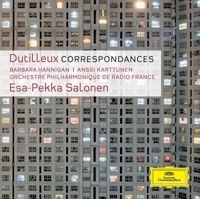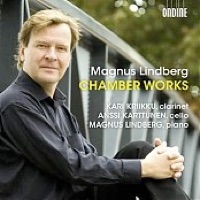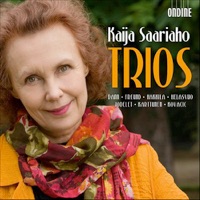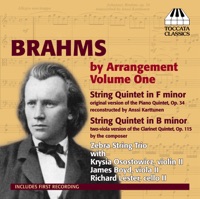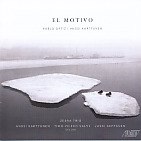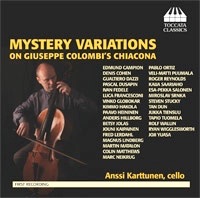
"Mystery Variations on Giuseppe Colombi's Chiacona – review
When the Finnish cellist Anssi Karttunen turned 50 in 2010, his wife, Muriel von Braun, and the composer Kaija Saariaho invited 30 composers whose works Karttunen had played to write variations on the Chiacona by Giuseppe Colombi, often regarded as the earliest piece composed for the cello. None of the composers knew who else was contributing, and Karttunen committed to performing them all sight unseen. The order of these Mystery Variations is his own; the shortest pieces last just over a minute, while one takes over five. The oldest composer represented is Betsy Jolas (born in 1926) and the youngest Ryan Wigglesworth (born 1979); though, as you'd expect, a high proportion of Finns is on the list, there's a truly international spread of names, from Argentina (Martin Matalon) to Norway (Rolf Wallin), the Czech Republic (Miroslav Srnka) to China (Tan Dun). Gathered together, the miniatures make a comprehensive and enjoyable compendium of contemporary cello techniques, in pieces that may stick close to the theme, or bear little relationship to it all; however they come, though, Karttunen plays them with his usual unflappable mastery."
The Guardian, Andrew Clemens
"Mystery Variations on Giuseppe Colombi’s Chiacona
A celebratory work that provides multiple responses to solo cello writing
In this composite work written to celebrate the 50th birthday in 2010 of Anssi Karttunen, 30 composers have each contributed a variation on the Chiacona by Giuseppe Colombi (1635–94). The title ‘Mystery Variations’ reflects the fact that the composers had no knowledge of who else was contributing, and that Karttunen had agreed to play the set before he knew the roster himself.
It’s a testament to Karttunen’s vast repertoire that so many composers with whom he has worked are represented here, and there are some surprises, including the young Brit Ryan Wigglesworth, American composer and theorist Fred Lerdahl and Argentinean Martin Matalon. His fellow Nordics include the Finns Esa-Pekka Salonen, Magnus Lindberg (who closes the set), Kaija Saariaho, Jukka Tiensuu and Paavo Heininen, and the Swede Anders Hillborg.
The variety here is mind-boggling – from Matalon’s waspish, steely coloured ‘Polvo’ (Dust), employing a metal mute, to Tan Dun’s largely strummed offering in which the word ‘chaconne’ is declaimed; and from Vinko Globokar’s left-hand-only ‘Idée fixe’ (also with vocal intervention) to Colin Matthews’s ‘Drammatico’, which includes a low rumbling electronic part. The recording quality is exemplary and Karttunen’s virtuosity and versatility are clearly on show, but so too is his shining, beautifully clean tone. A must for anyone curious to hear what 30 modern minds can subject a cello to."
The Strad, Edward Bhesania
"Mystery Variations on Giuseppe Colombi’s Chiacona, on Toccata Classics
For Anssi Karttunen’s 50th birthday in 2010, his wife, Muriel von Braun, and his dear friend, acclaimed composer Kaija Saariaho, decided to give him an unconventional present. They gathered a group of composers who Karttunen had worked with and admires, and commissioned them each to write a short piece based on Giuseppe Colombi’s “chiacona” for solo cello. The composers featured on the album have an age range of 50 years from oldest (Betsy Jolas) to youngest (Ryan Wigglesworth), and hail from eleven countries across four continents. They represent a wide range of styles, but their work on this album is held together by inspiration, instrumentation, and of course, Anssi Karttunen’s distinctive playing style.
Colombi’s chiacona was written in the 17th century, and sounds a lot like the music of his Baroque contemporaries. It begins with a simple repetition of one note that falls into a melody which becomes the bass line for the rest of the piece. It then develops into a section with spritely, galloping scales, and goes through a few more transformations with chords and even faster moving scalar patterns before returning home to the original melody. The chiacona, a traditional baroque dance form, is defined by this structure. In this way, chiaconas are traditionally musings on a single idea, much like a theme and variations. By including the work of so many composers on the album, each deriving inspiration from this one piece as their theme, Karttunen’s birthday team created a sort of meta chiacona – or at least a large scale form of theme and variations, where the Colombi theme is a theme and variations in and of itself.
The real interest in the Mystery Variations on Giuseppe Colombi’s Chiacona is in seeing how the different composers chose to treat this assignment. Some of them took the more literal route and quoted whole phrases directly from the original, or utilized baroque sounding harmonies or imitative styles. But most of them latched on to one distinctive element, such as the dotted rhythmic pattern, note repetition, chordal motion, or melodic shape, and played with transforming and developing that idea as a motif. The order that the short variations are presented in the album (which Karttunen decided on after seeing them all completed) tends to favor contrast – slow is followed by fast, loud is followed by soft, etc. The order also tends not to put two composers next to each other who are concerned with the same element of the original.
Some of the more successful variations come from the composers who were creative in their use of the original chiacona’s thematic material. Perhaps my favorite piece on the album comes from Tan Dun, who incorporated vocalization of the word “chaccone” (the French form of the Italian word “chiacona”) in a rhythmic chant over strummed chords. The other composer who utilized vocalization to great success is Vinko Globokar, whose contribution “Idée Fixe” creates a counterpoint between the instrument and the performer’s voice. Globokar treats the cello mostly as a percussive instrument through hitting, scratching, and plucking sounds, with Karttunen’s voice humming fragments of the original Colombi melody and providing the only lyrical melodic material. At first, it seems as if the humming is stuck in Karttunen’s head, but it quickly grows in volume and becomes the primary voice as the cello fades into accompaniment. Other notable contributions on the album come from Roger Reynolds, Steven Stucky, Esa-Pekka Salonen, Edmund Campion, Pablo Ortiz, Luca Francesconi, Gualtiero Dazzi, and Kaija Saariaho.
Mystery Variations on Giuseppe Colombi’s Chiacona is one of the more interesting solo albums I’ve heard in a long time. Karttunen’s virtuosic ability is a pleasure to listen to, and he couldn’t have collected a more interesting and capable group of composers to write for him. But there are lots of great soloists, and lots of great composers. What sets this album apart is the concept. Each variation provides a small window into its composer’s personality; it highlights the ways in which their brains work. Part of the fun of listening to the album is in identifying the ways in which each composer related to the original Colombi theme. Through examining Colombi’s chiacona through the eyes of contemporary composers, the old becomes infinitely more relevant and interesting, and the new becomes grounded in history."
www.icareifyoulisten.com, Marina Kifferstein
"Anssi Karttunen: Mystery Variations on Giuseppe Colombi's Chiacona
Qui saura rendre vie à la chaconne de Colombi? Réponse dans ses Mystery Variations que l'on peut aborder comme une série policière en trente épisodes, saga d'un anniversaire (les 50 ans de Anssi Karttunen) que trente compositeurs ont été appelés à célébrer par une variation de leur cru. Pourvue d'un profil assez anonyme pour se fondre dans la foule des solos trépassés à l'épreuve du temps, la chaconne de cet Italien du XVII siècle constitue le thème idéal pour un investigation creative. Les réussites sont d'ailleurs nombreuses, dans le genre "affaire non classée" (Denis Cohen), ou dans le procédé "prélèvement d'ADN" (Pascal Dusapin). Toutefois, seule Betsy Jolas semble élaborer son oeuvre avec des gestes inspirés autant par la référence baroque que par la jeu moderne (Karttunen).
Le Monde, Pierre Gervasoni


